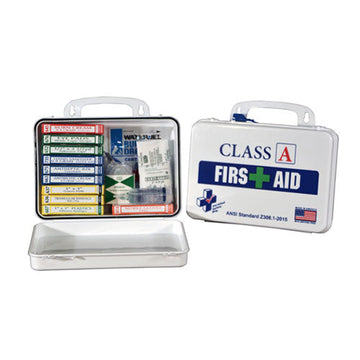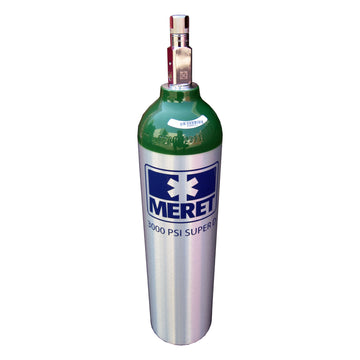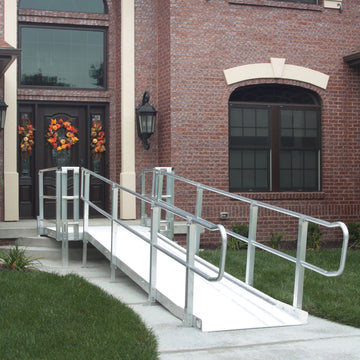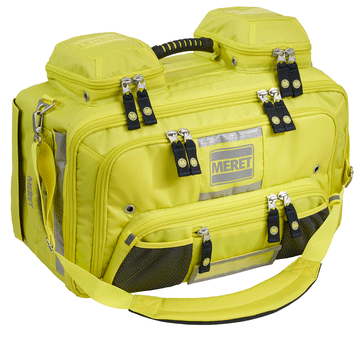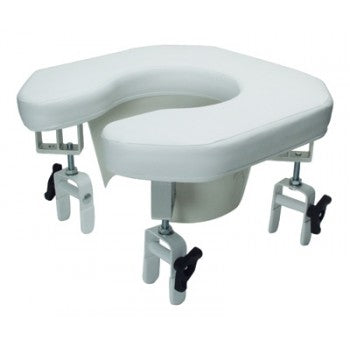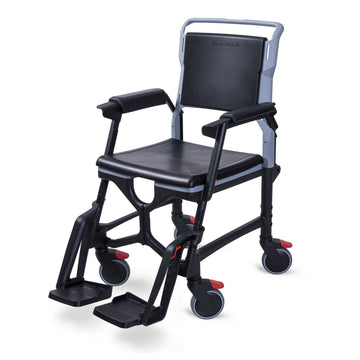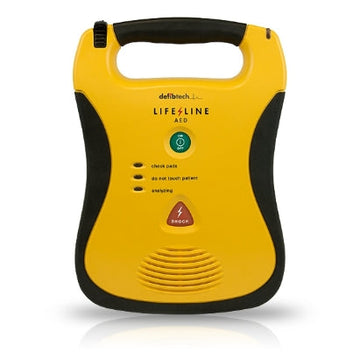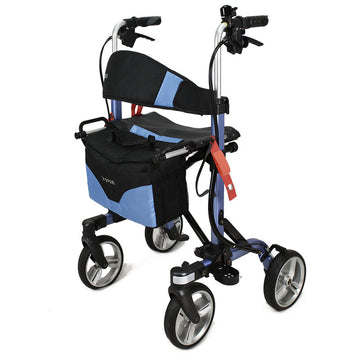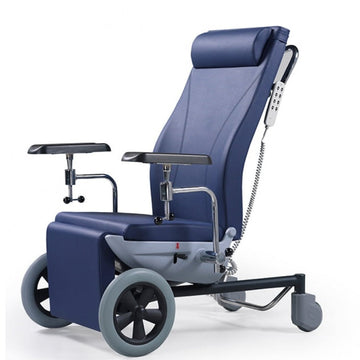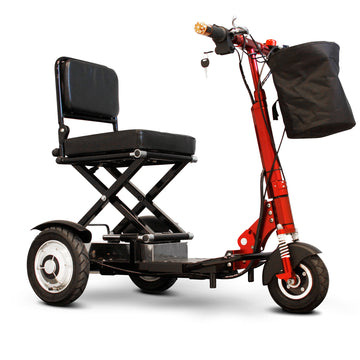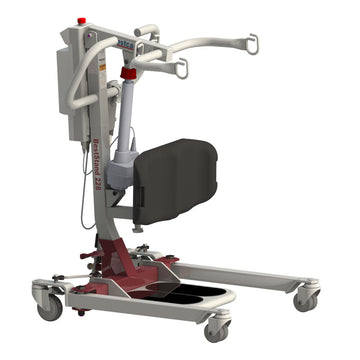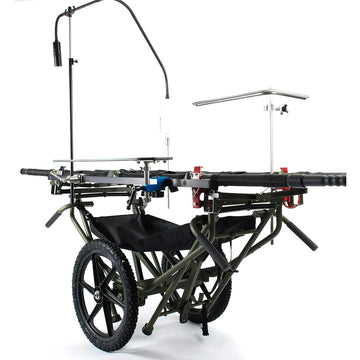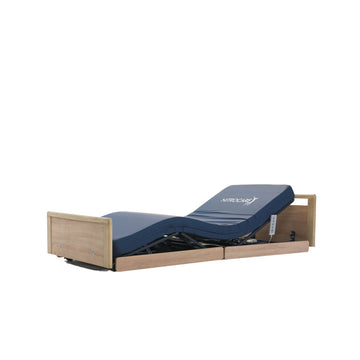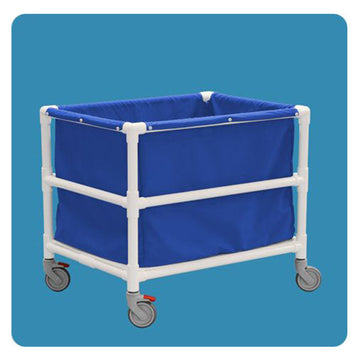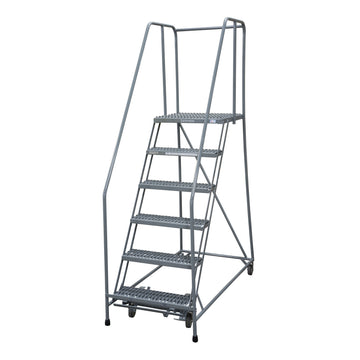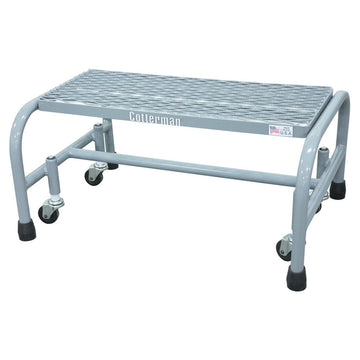For private homes as well as commercial spaces, wheelchair-accessible design is crucial. Two main options for conquering vertical obstacles are wheelchair ramps and wheelchair lifts. Every solution has its benefits and potential adverse outcomes, and the decision is made based on factors like user preferences, environment at the use case level, and budget limitation. In this guide, you will learn the key differences between a wheelchair ramp and a lift, discover some benefits of each accessibility solution, and consider when to install which one and which the better option is.
Understanding Wheelchair Ramps
Wheelchair ramps are sloping planes that wheelchair users can use to change heights without needing lifts. These are generally used in homes, offices, and other public spaces for easy access without any sharp rise.
Types of Wheelchair Ramps:
1. Portable Ramps
Lighter ramps you can fold and transport temporarily. Perfect for traveling or temporary uses.
2. Threshold Ramps
These smaller ramps connect slight surface elevation changes, like door THC, and allow smooth passage from one-floor level to the next.
3. Modular Ramps
Modular ramps are customizable and adjustable, so they can be designed to accommodate your unique staircases. They are intended for ease of use in temporary or permanent installations.
4. Permanent Ramps
These ramps are made from long-lasting materials such as concrete or metal and are designed to last many years at a fixed location (whether in the home or around public buildings).
Benefits of Wheelchair Ramps:
Ease of Use
Ramps provide a simple, easy-to-understand method for wheelchairs moving between different heights. They are free-running and do not require mechanical operation.
Maintenance
Ramps require little maintenance, whereas mechanical lifts must be serviced regularly. They are a little more inactive, with regular inspections and cleaning.
Independence
People who use a wheelchairs can move about without the need to depend on others, gaining more responsibility.
Aesthetic Integration
Curved ramps can be designed to blend well with the architecture so that they do not stick out like a sore thumb on your property.
Drawbacks of using Wheelchair Ramps
Space Requirements
A ramp needs a lot of horizontal space to achieve the pitch required to keep wheelchair users safe. The ADA standard requires a one-to-twelve pitch, which means that for every inch of the pitch, there needs to be twelve inches of height.
Weather
Ramps outside will get wet or frozen and need constant attention to stay safe for all users. Outdoor ramps also need to be treated for snow and ice.
Physical Effort
Ramps are required, but take life from caretakers as they push people up them. If they are too long, users get tired.
Types of Wheelchair Lifts
Vertical Platform Lift

This lift goes straight up and down levels and can be used indoors or outdoors. This can be installed in homes as an elevator to every level or in front of the main entrance.
Inclined Platform Lift

This lift follows the flow of an existing staircase. This is necessary in buildings with more overhead space to put a bolt straight up and down lift, such as a school.
Portable Wheelchair Lift

Whenever a stair master crane does not operate in the building, a temporary device can be placed.
Drawbacks of Wheelchair Lifts
Price
Wheelchair lifts tend to be more costly than ramps, with the barrier of high upfront costs and potential long-term maintenance expenses.
Maintenance
Lifts should be maintained periodically to ensure a safe and steady operating process. Mechanical parts will eventually become old and require professional maintenance.
Installation
A wheelchair lift must be professionally installed, sometimes requiring structural changes on the property.
Mechanical Reliability
Lifts rely on mechanical and electrical systems, so if these fail, the lift may not operate at all, in which case there is no alternative access.
Comparing Wheelchair Ramps and Wheelchair Lifts
Below are some of the most important factors to living facilities in deciding whether a ramp or wheelchair lift is more functional:
Space Availability:
Ramps - Need a lot of lateral space to keep the ramp from getting slippery. Best for larger outdoor or indoor properties.
Lifts - Need little width, fantastic for properties that lack room.
Cost:
Ramps - These are usually cheaper and work well for small vertical runs.
Lifts - upfront cost higher & ongoing costs vs stairs in terms of maintenance.
User Needs:
Ramps - Encourage greater independence and facilitate accessibility for people navigating ramps without support.
Lifts - These do not require physical strength and are a good fit for people with limited mobility or stability.
Maintenance:
Ramps - Low maintenance, mainly just needing an occasional scrub and check-over.
Lifts - Lower maintenance and basic repair options are often DIY. Lifts: Require professional service for safe operation.
Aesthetic Integration:
Ramps - Ramps can be designed to match the architecture and landscape.
Lifts - Some lifts may require structural work to be fitted, which can make aesthetic integration more difficult.
Environmental factors (Weather):
Ramps - Outdoor ramps can be weather-prone and require non-slip surfacing or regular maintenance.
Lifts - Indoor or outdoor doors and optional weather-resistant lift gates.
Public Space Considerations
High Traffic Areas
Ramps can also serve as a more functional choice in high-foot-traffic public spaces. Many users can use them to access one area simultaneously, and you can customize enhanced turnstiles for persons in wheelchairs. Either way, it is important that the ramp does not become cluttered and present a tripping hazard for pedestrians.
Aesthetic Considerations
The visual effect of access solutions in public places is concealable. Ramps follow a vertically stacked design that uses materials and aesthetics to match the surrounding architecture. Wheelchair lifts are generally functionally sound but can be more difficult to integrate seamlessly into the look of your home.
Long-Term Use and Durability
Most public areas require heavy use and need to withstand the test of time. Wheelchair Lifts Last But Not Least: all wheelchair lifts are built to last. At the same time, they should get regular servicing. Ramps are all the more durable and cheaper to maintain, so they are great for use in high-traffic areas.
Considerations for Private Homes
Personal Preferences
Most notably, owners' preferences play a major role in the home segment. A ramp can be easier and more independent for some, whereas a wheelchair lift is the most convenient option.
Space Constraints
A wheelchair lift may do better in homes with limited space. Small space: If there is limited area to install a ramp, you may have to make big changes in landscape or structure. A wheelchair lift is space-saving but still provides accessibility.
Cost and Maintenance
The price point of accessibility solutions is an important factor for homeowners, as are the expenses associated with their upkeep. Even with more to set up, a ramp will have. More space maintenance costs do exist, but they are much. Even further into this, the latter also needs regular maintenance, making it more expensive over the long run.
Which is better?
A wheelchair ramp versus a wheelchair lift depends on what the user of the device requires, and it comes down to budgetary concerns as to which will be more applicable given your proposed property particulars. Here are some general suggestions:
Choose a Ramp If:
• If you have the room for it, allow yourself some extra slope.
• You want the trouble-free, simple, yet proven cheap solution.
• The user can self-propel up the hill (able-bodied, strong enough)
• You want a solution to blend in with the grand design.
Choose a Lift If:
• This is more space and not patchable so that a ramp would be quite out of sense.
• The user has potential strength or mobility but cannot easily climb slopes.
• Are you ready for the extra up-front costs and subsequent continued maintenance costs?
• It would help if you had some indoor/outdoor access solution.
Final Thoughts
Selecting a ramp or wheelchair lift involves several factors, including cost, available space, and user safety needs. Ramps are cheap and easy but require significant space and can be hard work to ascend. While pricier, wheelchair lifts are also a compact and user-friendly option for those with limited space or an impaired ability to transfer without assistance.
Ultimately, it is more about using this option since the best option may depend on users, specifications, and environment. However, with a comprehensive look at all the angles and some professional advice, you can improve the practicality and inclusivity of your accessibility solution to assist better people who otherwise have difficulty getting around.


